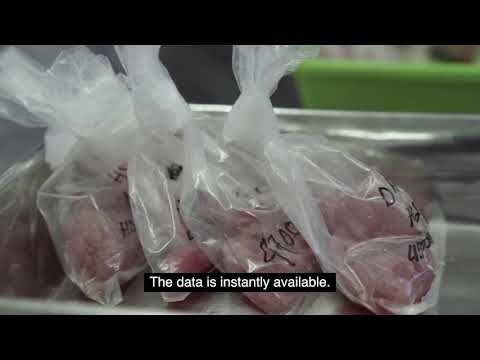No time like the present. In today’s fast-paced world of round-the-clock business, transactions occur constantly, customers are always on the line, and success hinges on ever-tightening margins. Efficiency rules the day.
That’s why the most forward-looking organizations know how to account for sales in near-real-time, thus improving their chances of thriving in hyper-competitive markets. They appreciate that an optimized back office enables an agile and responsive front office.
The key to this solution? A lightning-fast reconstruction of a critical business platform: the enterprise resource planning solution, otherwise known as ERP. Now arguably in its fifth generation, the modern ERP takes advantage of several significant innovations.
First and foremost is an in-memory architecture. SAP Co-Founder Dr. Hasso Plattner threw down the gauntlet more than a decade ago with the vision for SAP HANA, a fully in-memory solution designed to revolutionize the speed and power of enterprise computing.
Unlike any other ERP solution on the market, SAP S/4HANA relies entirely on an in-memory architecture to carry out the myriad day-to-day functions of the modern enterprise. This is no small task considering the throughput of today’s leading multinational corporations.
By eschewing spinning disc, SAP S/4HANA required a complete rewrite for many of the functions that comprise a comprehensive ERP. That’s because an in-memory approach fundamentally changes the dynamics of how data gets stored, accessed and processed.
As SAP CTO Björn Goerke noted at SAP TechEd Conference in Las Vegas, “This is not your grandfather’s ERP.” His point is that SAP S/4HANA represents such a significant departure from past versions, one which calls for a rethink of entire business models.
Why Now?
A truism dating back to the ancient Greeks notes that luck is when opportunity meets preparation. It’s hard to argue that Plattner got lucky with his vision. Rather, it’s a case of timing really being everything. After all, a complete ERP redesign should take roughly a decade.
That timeline matters a great deal now in light of converging forces in the business world. On the one hand, global competition puts greater emphasis on operational efficiency. With margins tightening, companies need to optimize their processes, and especially, the customer experience. A real-time ERP can play a major role in accomplishing both of these objectives.
Another major driver right now is regulation. There are numerous regulatory changes across several industries that are currently putting pressure on organizations to get much more visibility into issues like revenue recognition, privacy and process. In all of these scenarios, a real-time ERP can play a significant role in helping organizations not only stay compliant, but also reinvent critical business processes.
At a recent seminar in Huntington Beach, Calif., a group of speakers offered their perspectives on the relevance, power and challenges on a modern, real-time ERP. Long-time SAP partner Bramasol gave several presentations to set the context. Bramasol is a consultancy that was launched 21 years ago by Plattner himself, and remains wholly owned by the visionary enterprise software guru.
John Froelich, a vice president with Bramasol, set the stage for the day’s presentations by demonstrating the significance of digital transformation. “If you’re a public company, you have to keep your customers happy,” he said, referencing one of the most significant trends in business today, broadly categorized as customer experience.
By and large, customer experience means getting things right: knowing who calls into your call center, what kind of a customer they are, what their recent purchases have been, whether or not they’ve been on your web site recently, if there’s some sort of incident that has occurred which may have irritated them. Companies that can track and deliver that level of granular data to their representatives are winning the customer experience game.
That’s important for all kinds of reasons: customer retention, satisfaction, lack of customer churn, word-of-mouth, reputation management; the list goes on. And as Froelich noted: “Most customers do 60 to 70 percent of their research before they even talk to you.” In other words? Your reps better have that relevant knowledge about their customers, lest an upset customer quickly turns into an ex-customer.
Problem is, knowing all those sorts of data points about a particular customer is downright challenging. In the realm of legacy ERP systems, it’s basically impossible. That’s because getting there would require a whole battery of data integration processes to get the job done. Those processes could involve a message queue of some kind, an extract transform load (ETL) script, or perhaps some sort of change data capture (CDC) to get critical bits of information from point A to point B.
Again, in the world of legacy ERP, achieving the optimal level of customer experience was all but impossible, as it would require real-time data feeds from fulfillment systems, sales automation tools, customer relationship management systems, clickstream analysis technologies, even audio sentiment analysis. In short? Not gonna happen.
However, with a real-time ERP system, all of that is possible, and more. That’s because connections to the critical business systems have already been built in, and the relevant data about a particular customer — especially a high-value one — is at the ready, in-memory, while that call center rep is on the phone with them.
Froelich went on to extol other virtues of SAP S/4HANA, most notably the machine learning capabilities that are built into the platform. “SAP has automated processes that will do matching for you; and as you go through that process, it learns. You teach it. The first time, you may get 50 percent match, next time, 70, and then an 80 percent match.”
This is the power of machine learning, which tends to be much more narrowly focused than Hollywood directors give it credit for. As for matching, that type of functionality could apply to expenses in an accounting context; or to customer identification in a sales and marketing context. It can apply to any set of concepts or objects that a business wants to categorize.
The Customer Is Right
Real-world practitioners know there’s no substitute for experience. That’s particularly true for success in a domain like ERP, which requires not only tremendous knowledge, but also the practical know-how of working with key stakeholders across various departments. It’s not uncommon for disagreements to impede change.
Owing to this maxim, headlining the California seminar was a veteran ERP practitioner, Robert Seifert of ESRI. A seasoned pro, Seifert offered a wide range of insights about the realities of his job, and specifically the journey to SAP S/4HANA. He made abundantly clear that planning is critical, and is a process that ESRI has taken very seriously, with good results.
First things first: get the key stakeholders involved, and let them share their candid thoughts. Seifert said he and his team were very encouraged by just how forthright people were. “This is the most honest and open we’ve ever seen business people be,” he exclaimed. Turns out, professionals from across the organization stated clearly that they were ready for change. “But saying you’re ready for change, and actually implementing change are two separate things.”
At ESRI, the roadmap is being designed with great care. “We’ve been live on this environment for 25 years,” he noted. “This is an opportunity for us to take a step back, look at the things we do very well, look at the things we don’t do very well, and the things that we can do better.”
The big question on everyone’s mind, he says, is which deployment option to take: on-prem, single-tenant cloud, or multi-tenant cloud. This is a common issue for any company exploring SAP S/4HANA. There are pluses and minuses for each scenario:
- On Premise: On the plus side, a company can maintain complete control of their instance. On the down side, they still must maintain complete control of their instance. For companies with robust on-premise programs, and up-to-date data centers, this option makes sense.
- Single-Tenant Cloud: On the plus side, a company gets the benefits of a unique, private environment, with SAP or a trusted partner handling the traditional duties associated with data centers, including upgrades. On the down side, they lose some ability to make customizations, and the cost curve will likely bend higher that on-premise or multi-tenant cloud
- Multi-Tenant Cloud: On the plus side, gone will be the concerns of on-premise maintenance issues; and the total cost of ownership will likely be lower than both on-premise and single-tenant. Upgrades will be more consistent, but customization will be a challenge. This is a particularly significant issue, because, as Seifert noted, he has never seen a major enterprise system that did not need some customization.
Consult the Experts
Rounding out the day was a brass tacks presentation by Aliaksei Vasilko, an SAP expert from Bramasol with 15 years of hard-earned experience in the ERP space. He focused on the serious issues and hard decisions that face executives today. As expected, he offered some grounded advice for organizations preparing to upgrade their core business technology.
On the question of deployment model, he noted that certain industries will likely never go cloud. Manufacturing, for one, will likely remain on-premise for the foreseeable future. “If you have an enterprise with multiple factories and millions of SKUs, you’ll always go on-premise. You have tons of custom code, and most likely you would like to keep all this custom code because you want to protect your investment. You believe it’s your advantage.”
Another group of professionals who will unlikely embrace cloud? CFOs. Vasilko noted that most Chief Financial Officers demonstrate genuine reluctance to place their data in any cloud, let alone public cloud. For these folks, the on-premise approach will likely remain the default option. That said, opinions about public cloud are changing, even for staunch proponents of traditional on-premise solutions. When will the inflection point occur? Hard to say, but it’s likely imminent.
And then there’s the big question for any company looking to upgrade their ERP to the latest and greatest: greenfield or brownfield? The greenfield option is arguably the most transformative. In this scenario, a company will build out its new ERP system from scratch, source by source, process by process. Yes, it’s an intensive process, but it offers an opportunity to thoroughly rethink the enterprise. Average time to complete? Roughly nine to 12 months.
In the brownfield scenario, an organization ports its current installation over to the new platform in a more traditional sense. This is a plausible route if the raw amount of data to be moved is relatively low. “If your database is five to six terabytes, it’s doable with almost no trouble,” he said. “If it’s 50-60? Not so much,” noted Vasilko.
Welcome the Machines
Across the board, the day’s speakers all concur: The advantages a real-time ERP are vast and significant. And of all those benefits, Josh Clark of SAP nailed one of the most powerful — and mind-blowing: “With SAP S/4HANA, you take all your history, dump it into machine learning in SAP HANA, and it will process your transactions automatically, so then you go in and deal with exceptions. We’re seeing 90 percent of transactions being automated.”
Do the math on that one. If organizations can automate 90 percent of their transactions, that fundamentally changes day-to-day workflow, which will open up opportunities for new roles and responsibilities within the modern enterprise. That’s where the puck is headed now, and it’s where tomorrow’s innovators are focused. Yes, some jobs will go away, but by and large, those were not very fun or challenging jobs in the first place.
Eric Kavanagh is CEO and co-founder of The Bloor Group, and an active member of SAP’s Influencer Marketing program.







